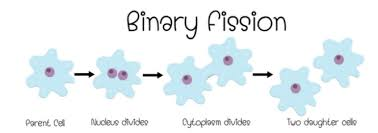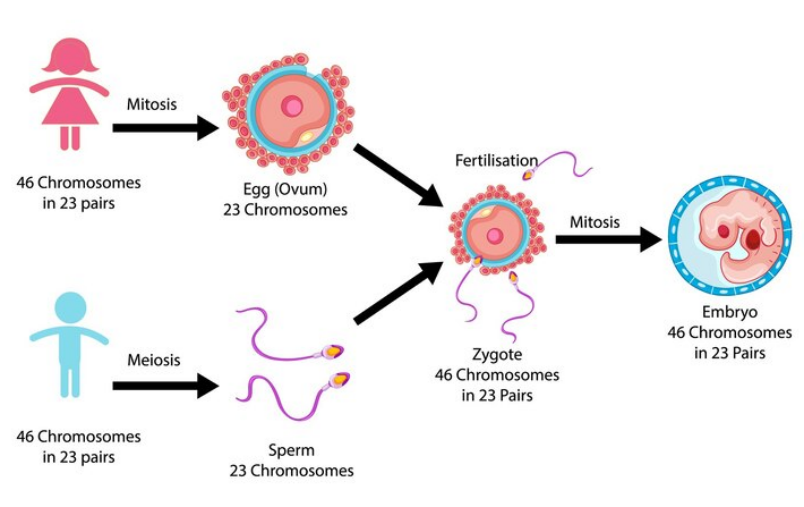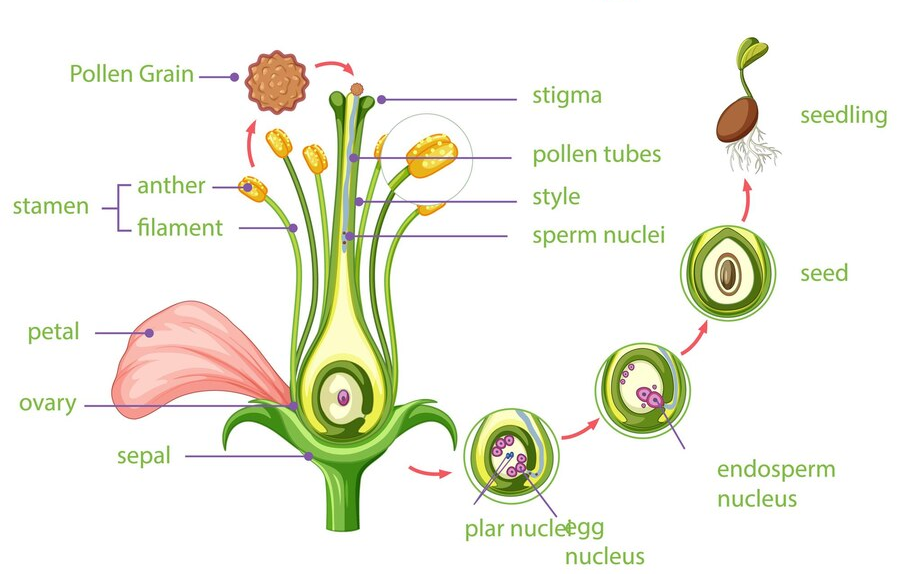Explore the Wonders of Reproduction
Reproduction is one of the most fascinating processes in biology—it is the method by which life perpetuates itself. In simple terms, what is reproduction? It is the process through which organisms produce offspring that are genetically or biologically similar to the parent. This essential mechanism not only ensures the continuity of species but also fuels evolution through genetic variation, especially when considering the types of reproduction available in nature.
What is Reproduction?
At its core, reproduction is the means by which living organisms create new individuals. This process is critical for maintaining species survival and can be broadly divided into two primary categories: asexual reproduction and sexual reproduction. Both methods play significant roles in nature, and each has unique modes of reproduction that can be observed across different life forms.
Types of Reproduction
Asexual Reproduction
Asexual reproduction involves a single organism giving rise to a new individual without the fusion of gametes. This method produces offspring that are virtually identical to the parent, making it a quick but less genetically diverse process. Here are some common modes of reproduction under the asexual category:
Binary Fission: In this process, a cell divides into two identical cells, each containing a copy of the parent’s DNA. Example of reproduction: Amoeba splitting into two.

Budding: A small outgrowth, or bud, forms on the parent and eventually detaches to live independently. Example of reproduction: Hydra.
Fragmentation: The parent organism breaks into multiple fragments, each capable of growing into a new organism. Example of reproduction: Planaria.
Sporogenesis: New organisms develop from spores, which are produced without fertilisation and can be dispersed by wind or animals.
While asexual reproduction is efficient and allows for rapid population increase, its major drawback is the limited genetic diversity, which can reduce adaptability in changing environments.
Sexual Reproduction
Sexual reproduction requires the involvement of two distinct gametes—male and female—which combine to produce offspring with a unique genetic makeup. This method is more complex and slower than asexual reproduction, but it introduces genetic diversity, crucial for adaptation and evolution. In this context, what is reproduction? It is a dynamic process that not only ensures species survival but also fosters variation and resilience among populations.

In Plants
Plants exhibit both asexual and sexual reproduction. Vegetative reproduction—a form of asexual reproduction—occurs when plant parts such as roots, tubers, or stems develop into new individuals. Sexual reproduction in plants happens through pollination, where pollen from the male part (anther) is transferred to the female part (stigma). Additionally, some plants undergo apomixis, producing seeds without fertilisation.

In Animals
Animals primarily reproduce sexually, though a few species are capable of asexual reproduction through methods like budding or fragmentation. In sexual reproduction among animals, fertilisation can occur either externally—where gametes meet outside the body—or internally, with fertilisation taking place inside the female’s body. Each mode of reproduction contributes to the diversity and adaptability of animal species.
The Genetic Impact of Reproduction
One fascinating aspect of sexual reproduction is the phenomenon of genetic recombination. During the formation of gametes, DNA strands mix and match, creating novel genetic combinations. This process is crucial for evolution and natural selection, allowing species to adapt to new challenges such as climate change and emerging diseases.
Environmental Influences on Reproduction
Environmental conditions play a pivotal role in determining the modes of reproduction an organism might adopt. For instance, in harsh or unstable environments, asexual reproduction may be favoured due to its speed and efficiency, despite its lower genetic variability. Conversely, in stable environments, sexual reproduction might be more prevalent to maximise adaptability and long-term survival.
Real-World Applications
Understanding what is reproduction is not just an academic exercise—it has practical applications in several fields:
Agriculture: Techniques such as grafting and vegetative propagation are used to produce consistent, high-yield crops.
Medicine: Research into cellular reproduction informs cancer studies and regenerative medicine.
Conservation Biology: Knowledge of reproductive strategies helps in breeding programmes for endangered species, ensuring genetic diversity and population recovery.
Biotechnology: Reproduction methods are harnessed in genetic engineering to develop organisms with desirable traits.
Fun Facts about Reproduction
Ancient Life: Some of the earliest forms of life on Earth reproduced asexually, paving the way for the diverse life forms we see today.
Size Doesn’t Matter: Despite their simplicity, organisms like bacteria can reproduce rapidly through binary fission, leading to exponential population growth.
The Power of Diversity: Sexual reproduction is nature’s way of ensuring species have a robust genetic toolkit, which is why biodiversity is key to the resilience of ecosystems.


FAQs on Understanding Reproduction: The Basis of Life Continuity
1. What is reproduction and why is it essential for the continuity of life?
Reproduction is the fundamental biological process by which new individual organisms, or 'offspring', are produced from their parents. It is essential for the continuity of life because it ensures that a species can persist from one generation to the next, preventing it from going extinct and allowing life to continue on Earth.
2. What is the main difference between sexual and asexual reproduction?
The main difference lies in the number of parents and the resulting genetic variation. Asexual reproduction involves a single parent and produces genetically identical offspring, or clones. In contrast, sexual reproduction typically involves two parents whose gametes fuse, creating genetically unique offspring and promoting genetic diversity within a population.
3. What are some common examples of asexual reproduction in organisms?
Common modes of asexual reproduction include:
- Binary Fission: A single-celled organism like an Amoeba splits into two identical daughter cells.
- Budding: A new individual grows from an outgrowth on the parent's body, as seen in Hydra.
- Fragmentation: The parent's body breaks into multiple pieces, each capable of regenerating into a new organism, such as in Planaria.
- Vegetative Propagation: New plants arise from parts like roots, stems, or leaves, for example, growing a new potato plant from a tuber.
4. Why is the genetic variation from sexual reproduction considered evolutionarily advantageous?
Genetic variation is the cornerstone of evolution. By creating new gene combinations, sexual reproduction produces a diverse population where individuals have different traits. This diversity increases the likelihood that some individuals will survive and reproduce in the face of environmental challenges like climate change or new diseases. This process, known as natural selection, allows species to adapt and evolve over time.
5. What are the key disadvantages of a species relying solely on asexual reproduction?
The primary disadvantage of asexual reproduction is the lack of genetic diversity. Since offspring are clones of the parent, the entire population shares the same genetic vulnerabilities. A single adverse event, such as a new pathogen or a sudden environmental shift, could potentially wipe out the entire population because no individuals possess different traits that might offer resistance or adaptability.
6. How does reproduction in plants differ from that in animals?
While both groups use sexual reproduction, a key difference is that many plants can also reproduce asexually through vegetative propagation, a method less common in animals. Furthermore, sexual reproduction in animals involves either internal or external fertilisation to form a zygote. In flowering plants, the process is more complex and includes pollination followed by a unique event called double fertilisation.
7. How is our understanding of reproduction applied in fields like agriculture and conservation?
Understanding reproduction has major real-world applications. In agriculture, techniques like grafting and vegetative propagation are used to efficiently produce crops with consistent, desirable traits. In conservation biology, knowledge of reproductive strategies is vital for designing successful captive breeding programs for endangered species, which helps to maintain genetic diversity and support population recovery.
8. Under what environmental conditions might asexual reproduction be more favourable than sexual reproduction?
An organism might favour asexual reproduction in a stable and predictable environment where the parent's genetic makeup is already well-suited for survival. Because it is a faster and less energy-intensive process, it allows for rapid population growth to colonise an area quickly. Sexual reproduction, with its genetic shuffling, is generally more advantageous in changing or stressful environments where diversity is key to long-term survival.










